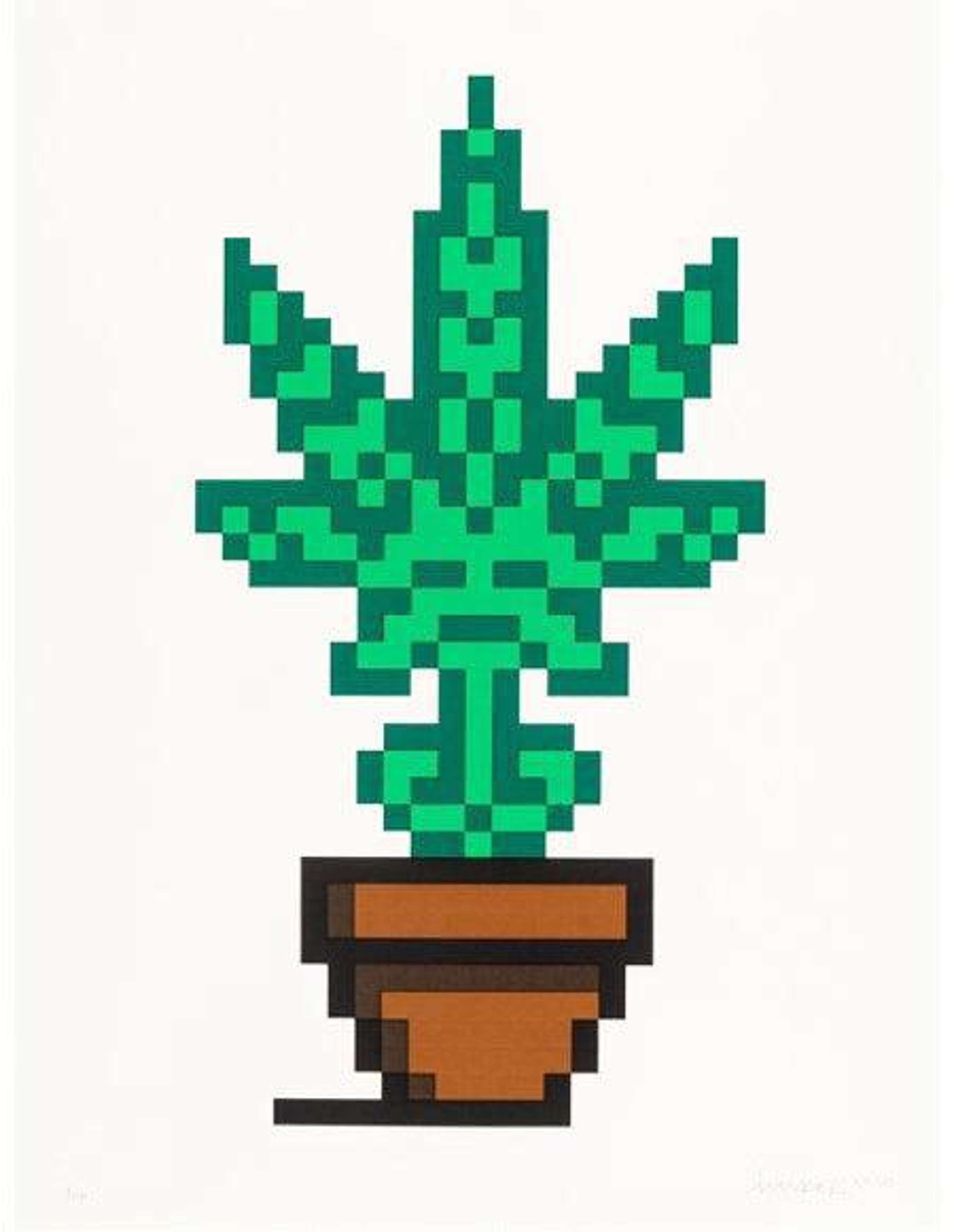
Hollyweed (brown)

Hollyweed (brown)
Signed Print
Invader
£2,950-£4,450
$6,000-$9,000 Value Indicator
$5,500-$8,000 Value Indicator
¥28,000-¥40,000 Value Indicator
€3,400-€5,000 Value Indicator
$30,000-$45,000 Value Indicator
¥610,000-¥920,000 Value Indicator
$3,950-$6,000 Value Indicator
There aren't enough data points on this work for a comprehensive result. Please speak to a specialist by making an enquiry.
55 x 42cm, Edition of 100, Screenprint
Auction Results

Track auction value trend
Meaning & Analysis
This signed screen print from 2018 is a limited edition of 100 from Invader’s Hollywood series. The print, which belongs to the Hollywood series, depicts a plant with a single leaf contained within a brown pod, and also comes in a second version in red.
The print was produced in honour of Invader’s largest solo exhibition in North America, Into The White Cube, held at Over the Influence in Los Angeles. In its simple portrayal of a plant, the Hollywood series is reminiscent of earlier public pieces produced by Invader in 2016 for his twelfth invasion of London, which he called God Save The Space Invaders. There, Invader similarly represented plants and flowers which merged within the dynamic British urban landscape.
The print responds to its patronage by quoting the famous American landmark, the Hollywood sign, which Invader had previously tagged in several invasion waves. Thus, even if produced for a private setting, the Hollyweed print showcases the extent to which Invader always inscribes his works within an understanding of the city they are situated in. This shows that Invader necessarily thinks of both of his private and public works as inherently connected, responding to one another as well as to the urban and cultural environment of the cities they are placed within.
Thus, despite what might seem like a heterogeneous body of works, a closer analysis of Invader’s artistic practice uncovers the connections and histories binding each artwork to the other ones through hidden-at-first thematic files rouges.